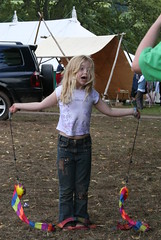
Dr. Kiyohisa Ogawa writing in the Journal of Trauma-Injury Infection & Critical Care, 17 August 2011 explains that the majority of type I coracoid fractures set out in Ogawa’s classification constitute double disruption of the superior shoulder suspensory complex (SSSC) as proposed by Goss, frequently resulting in healing delay and adverse functional consequences. However, there are few reports alluding to strategies or concrete treatment methods of such injuries. The purpose of this report is to introduce our surgical strategy for treating the type I coracoid fracture with concurrent injuries and to describe our treatment method with their outcomes.
The methods used: Thirty-six patients, who had acute type I coracoid fractures surgically treated and were followed up for 1 year or longer, constituted the present study population. Reduction and stabilization were undertaken beginning with the most medial unstable injury of SSSC and proceeding to the lateral ones. The respective coracoid fractures were finally reduced and fixed. In the follow-up, patients were directly examined and evaluated using the ratios of the Constant score for the injured side to that for the normal side.
The results were: There were a total of 80 ipsilateral injuries of SSSC, including the coracoid fractures, and double disruption accounted for 94% of the patients. Of these, 62 injuries were surgically treated. No complications associated with surgery were observed. Bone union was achieved in all fractures; no patients required an additional operation. The Constant score ratio at the follow-up was 93% +/- 7.4% on average.
The conclusionwas : Although the majority of cases with type I coracoid fractures suffered double disruptions of SSSC, satisfactory results have been obtained with surgical treatment focusing on the assured reconstruction of a firm scapuloclavicular union.
Following shoulder surgery as well as other traumas the ArmTutor has proven to be a success in improving fine motor, sensory and cognitive impairments through intensive active exercises. Repetitive training tailored to the patient’s performance includes augmented feedback leading to enhanced functional rehabilitation. The ArmTutor and its sister devices the HandTutor, LegTutor and 3DTutor are being used in leading U.S. and foreign hospitals and clinics. The system is adaptable to both children and adults and allows for tele rehabilitation for patients at home.
No comments:
Post a Comment